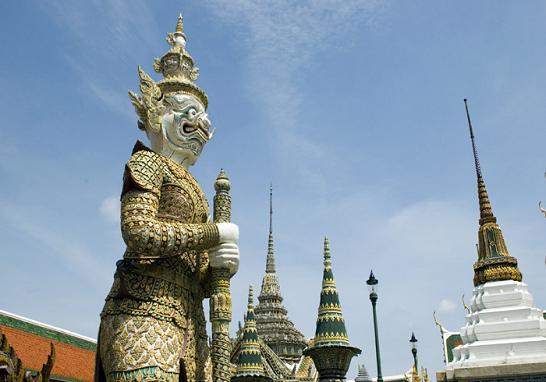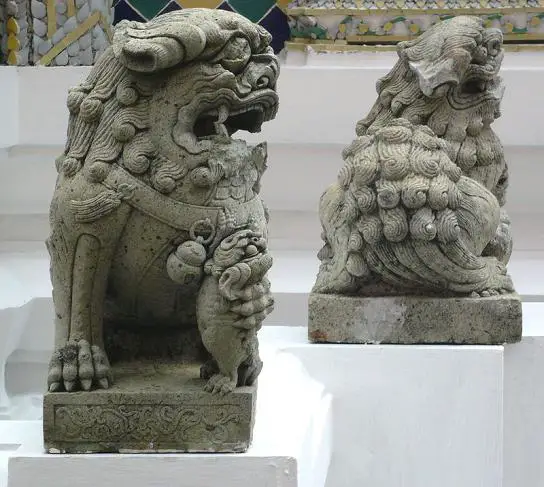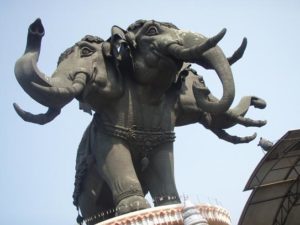It’s what Legends are made of!
Discover the most amazing Thai mythological figures that have inspired Thais for centuries! Many of these great stories and characters can be traced back to Buddhism and Hinduism. These traditions, having been passed down from generation to generation, now have a strong influence on Thai culture, thought, art, and architecture!

Naga Serpent Figures
Seldom do you come across such Amazing Thai Mythologies both tangible and mythical as you do in one of South East Asia’s most highly respected countries? Take, for instance, the enigmatic Naga serpent figures found throughout Thailand.
They almost get overlooked by western tourists in the mayhem and excitement that exists here. These magnificent mystical creatures are everywhere, yet we know and hear very little about them.
Next time you’re in Thailand, take some time to look around, and I’m sure you’ll get to appreciate their exquisite beauty. Naga figures, whether sculptured from wood, stone, bronze or any other material, are serpent-like creatures that act as protective guardians against evil spirits.
They often flank the walls of temples or the staircases leading up to them. Many you’ll see carved on roofs, doors, gables and windows. Nagas are understood to control rainfall and become worshipped as water givers during Songkran festivities.
The protective powers of Nagas come to the forefront when Mucilinda, the king of the Nagas, grows several heads to offer shelter to the Buddha from a thunderstorm.

Garuda Mythical Bird
Though the significance of Nagas is deep-rooted throughout Buddhist Asia, their meanings may vary slightly from country to country. They often overlap between Buddhism and Hinduism.
In Buddhism, their origins can be traced back to an episode in the Jataka tales in which a Garuda or mythical bird will attempt to attack and subdue a Naga that tries to protect the Buddha. The successful intervention of the Naga will then allow it to become the Buddha’s guardian.
The Jataka Tales have references to various Asian languages, but in typical Thai tradition, they’re uniquely known as Chadok. They refer to a large body of folklore-like literature concerning the previous births of Buddha.
Chadok or Jataka is specifically, attributed to a division of text concerning the Pali Canon of Theravada Buddhism, which includes the Khuddaka Nikaya of the Sutta Pitaka.
Nagas, you will also find at the Disney Land theme park of Wat Khack in Nong Khai, a small town in northeast Thailand. The park supports several bizarre and bewildering sculptures, including the seven-headed Naga.

Srivijaya Buddhist Empire
Discoveries of some of the temple ruins, as well as many exquisite bronze and stone statues depicting remnants of the Srivijaya Buddhist Empire, can be seen in the somewhat dreary railroad town of Chaiya. Chaiya is a small town situated in the Surat Thandi Province which is just off the coast of the Gulf of Thailand.
Many excellent examples of these superb sculptures found here date back as far as the 7th to the 13th-century. They show Mon and Indian influences of the Srivijaya period with figures such as Bengali-style Buddha images and multi-armed Hindu deities. Along with a variety of votive tablets, these you’ll find at the Chaiya National Museum as well as many at the National Museum in Bangkok.

More amazing Thai Mythologies
See below for more great Thai Mythologies, Thailand is certainly a place of wonder and magic… why not discover some of these mysteries for yourself!
 | Kinnari appears in the form of a half-woman and half-bird. |
 | Yaksha appears in the form of a grimacing giant statue. |
 | Makara is an aquatic monster part crocodile, part elephant, and part serpent. |
 | Singha has a lion-like figure whose primary function is to guard temples. |
 | Hongsa is often seen as a glittering five-meter tall swan-like figure gracing the prow of a royal barge or perched high on the apex of temple roofs. |


